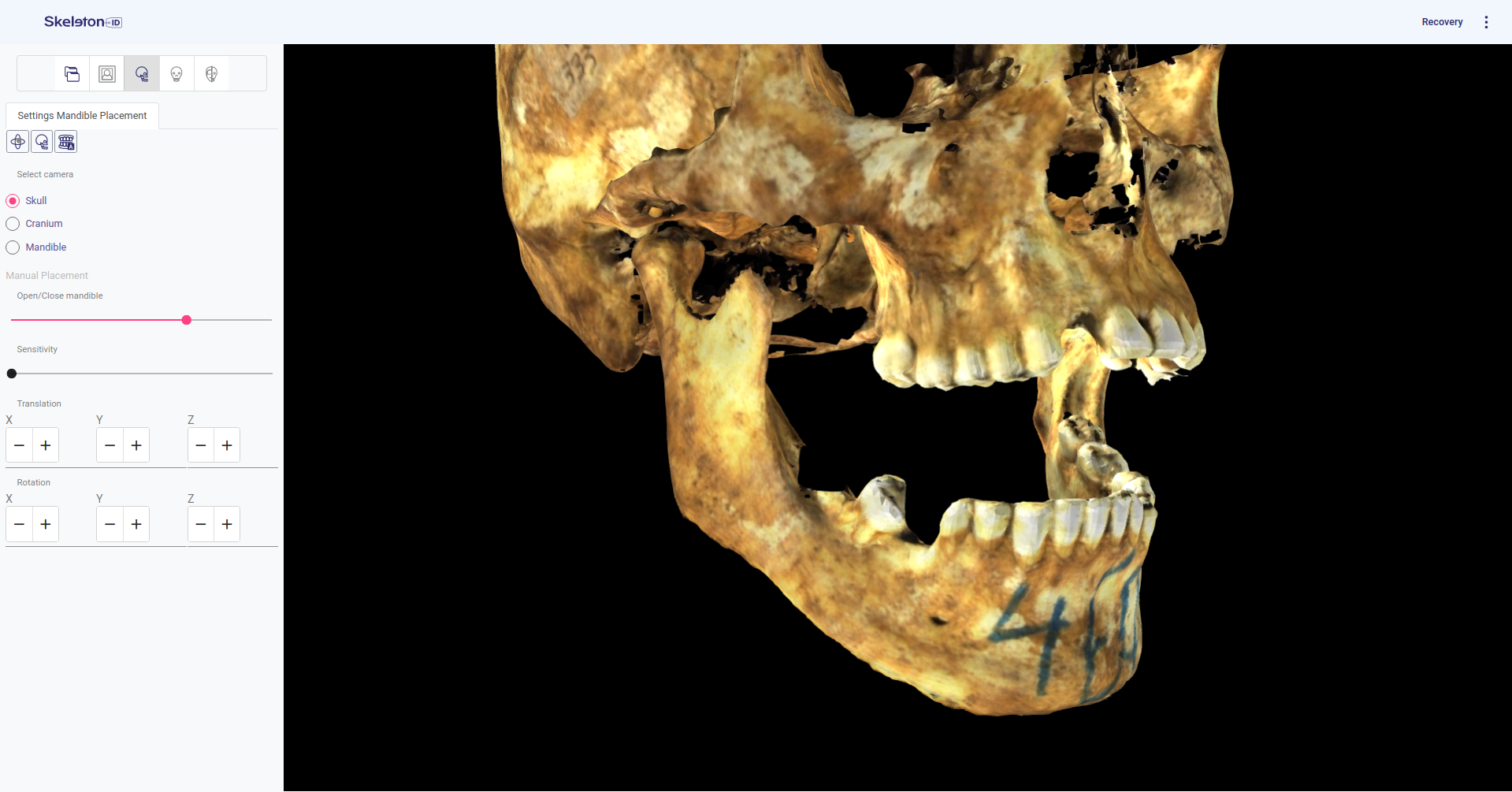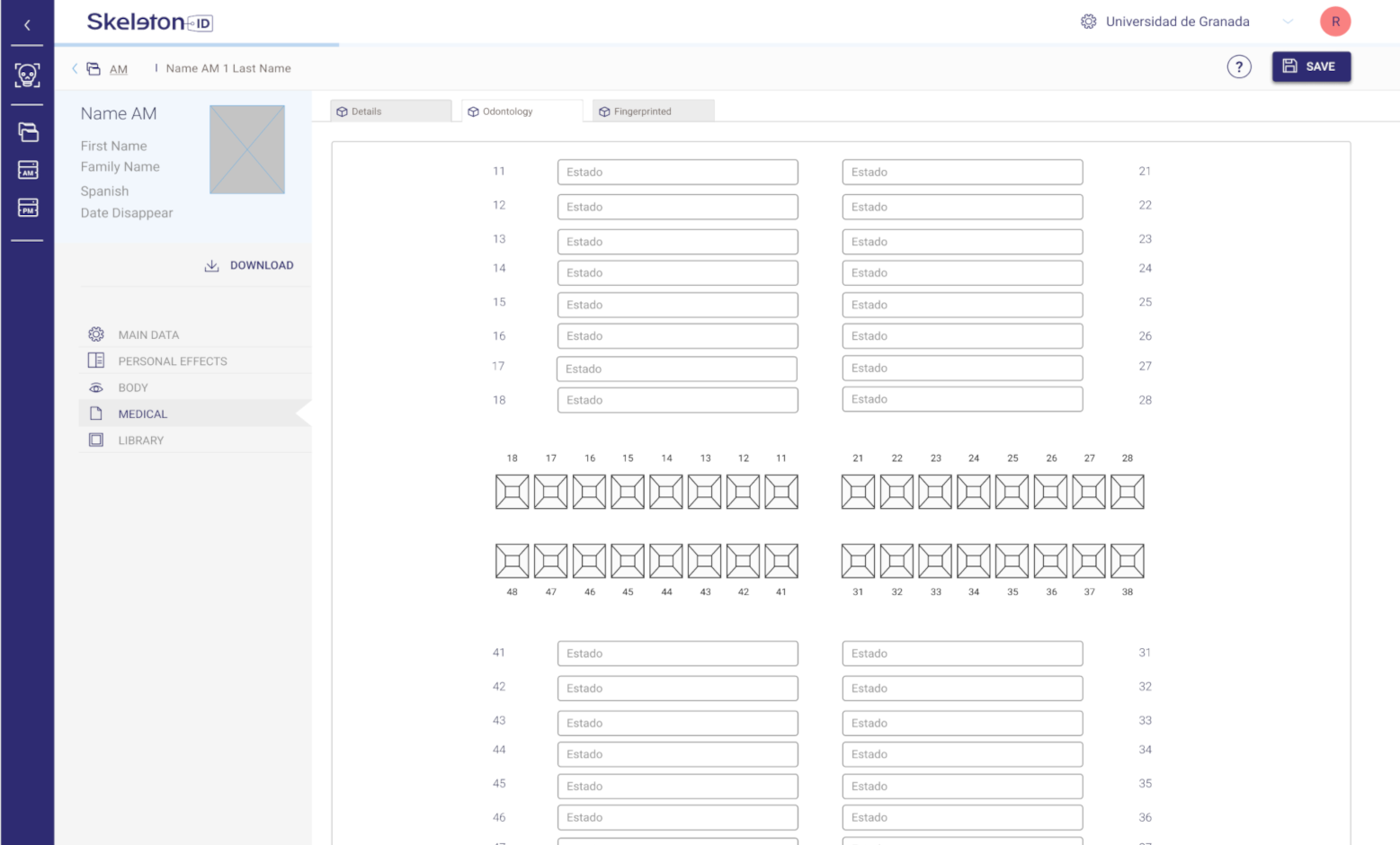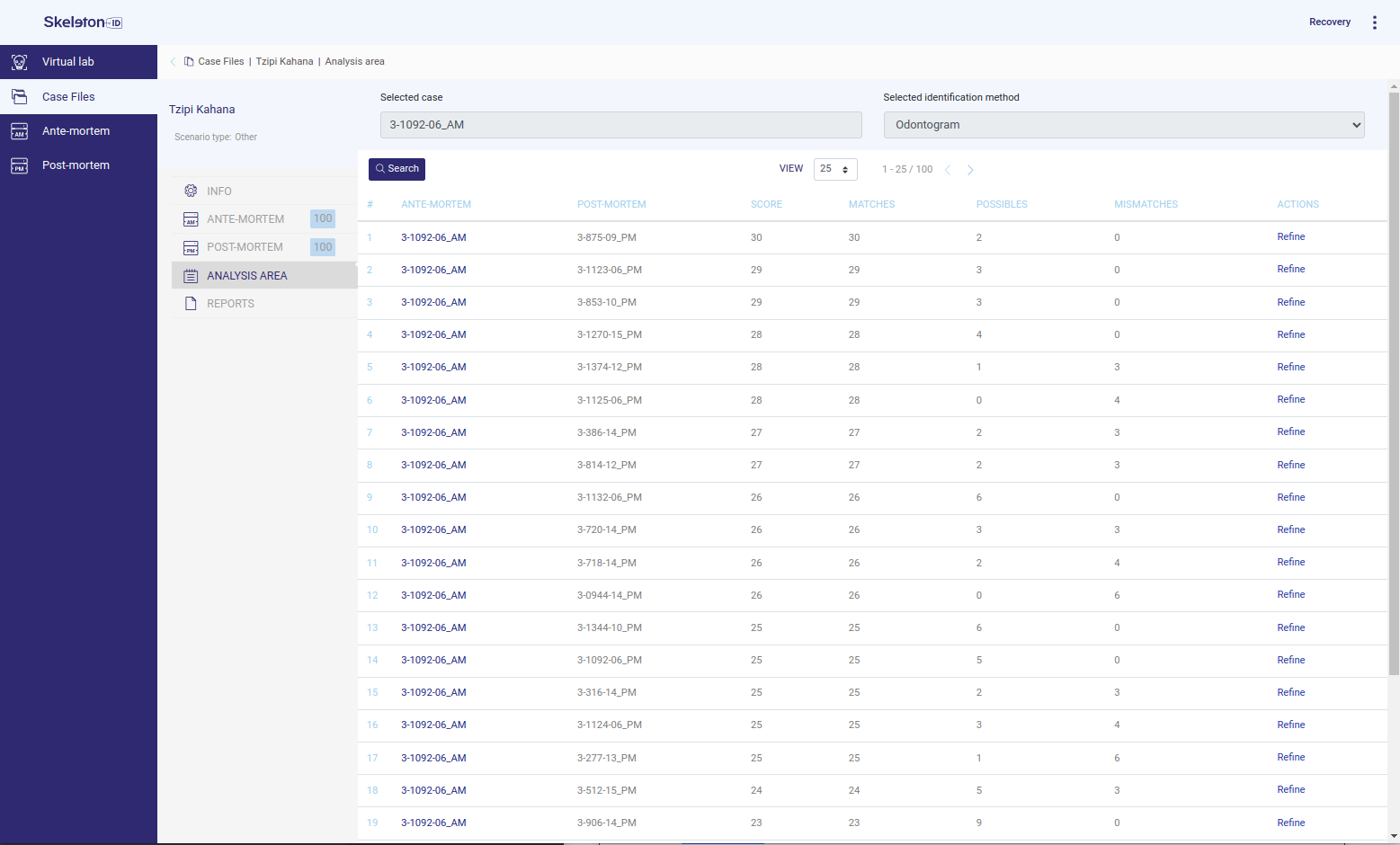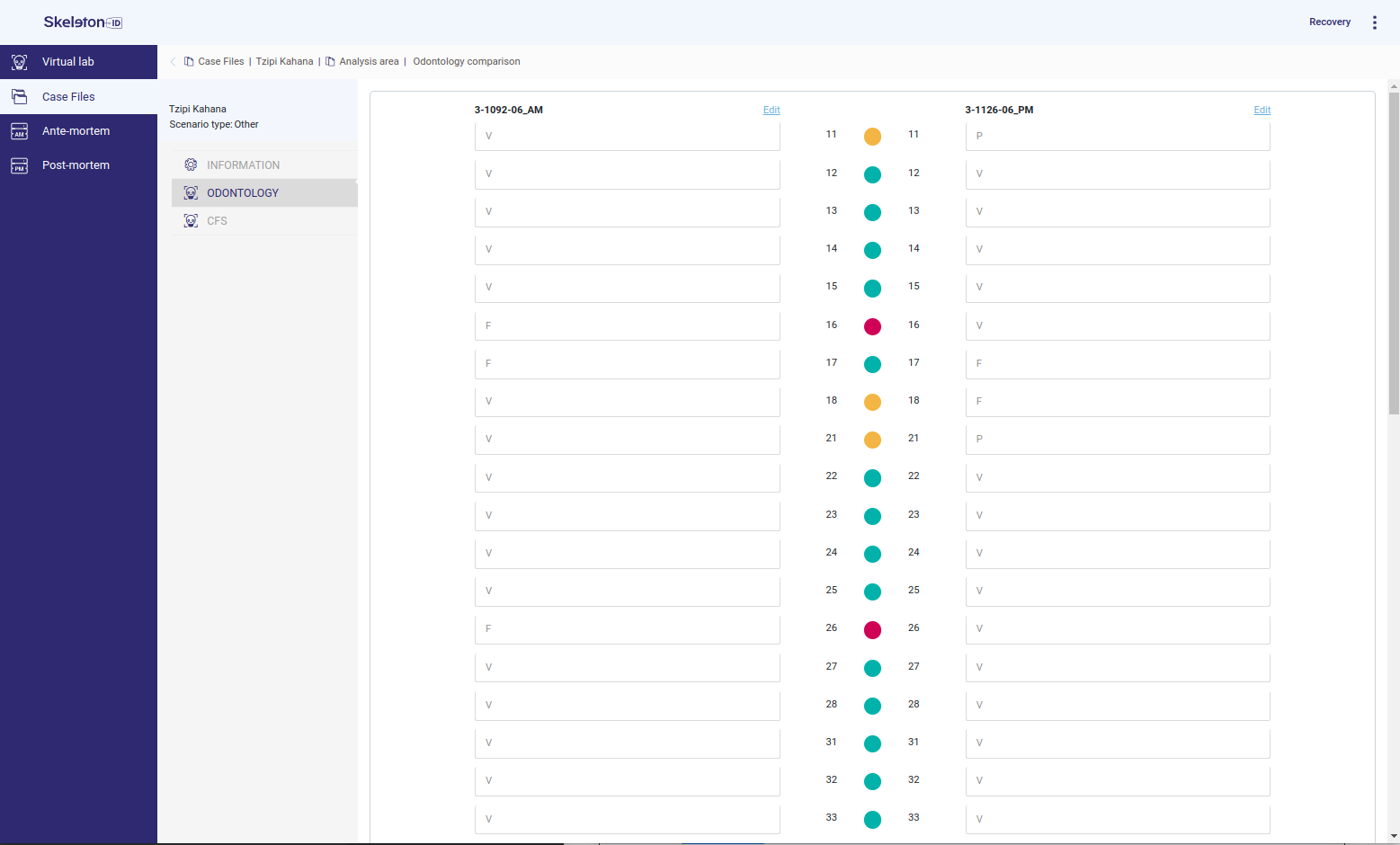Dental Comparison Module
The Dental Comparison Module for Skeleton·ID is following the Interpol DVI forms making the transition for forensic expert fast and intuitive.

Comparative Dental Analysis is one of the most reliable and internationally accepted methods to confirm human identity. It is considered a primary identification technique by Interpol and on the same level as fingerprints and DNA profiling. The unique structures of human teeth, and the fact that they are the hardest substance in the body and do not deteriorate like soft tissue over time, make them the obvious choice for post-mortem identification.
The adult dentition is normally composed of 32 teeth. If we assign each tooth five surfaces (vestibular, lingual, mesial, distal, and occlusal) and we add to this the variety of findings that can be found in each one of them (caries lesions, esthetic or metal restorations, anomalies of the teeth, etc.) this offers 1.8 billion combinations to obtain effective information for identification. Hence, dental identity has been defined by Acharya and Taylor as “the total of all characteristics of the teeth and their associated structures which, while not individually unique, when considered together provide a unique totality”.
Dental data can be recorded at the time of the post-mortem examination and then compared to antemortem data that is supplied by a dentist that has treated the victim during their lifetime.
The interface
The interface of the dental comparison module for Skeleton·ID is following the Interpol standard for allowing the user to specify the following information:

Note specific features following different coding systems: from 7 to 133 dental codes, with intermediate possibilities as well as the current Interpol recommendation (41 codes).
Automatically compare large numbers of AM-PM dental records in seconds using our accurate ranking algorithm.


“Traffic light” visualization to easily analyze matches, possible matches and inconsistencies.
And also…
Report dental findings for primary and secondary teeth using the FDI, Haderup, Palmer, and Universal notations.
Display AM-PM radiographs to make the final identification decision.
We keep investing in R&D and will include automatic dental coding and automatic orthopantomogram comparison in the future.
